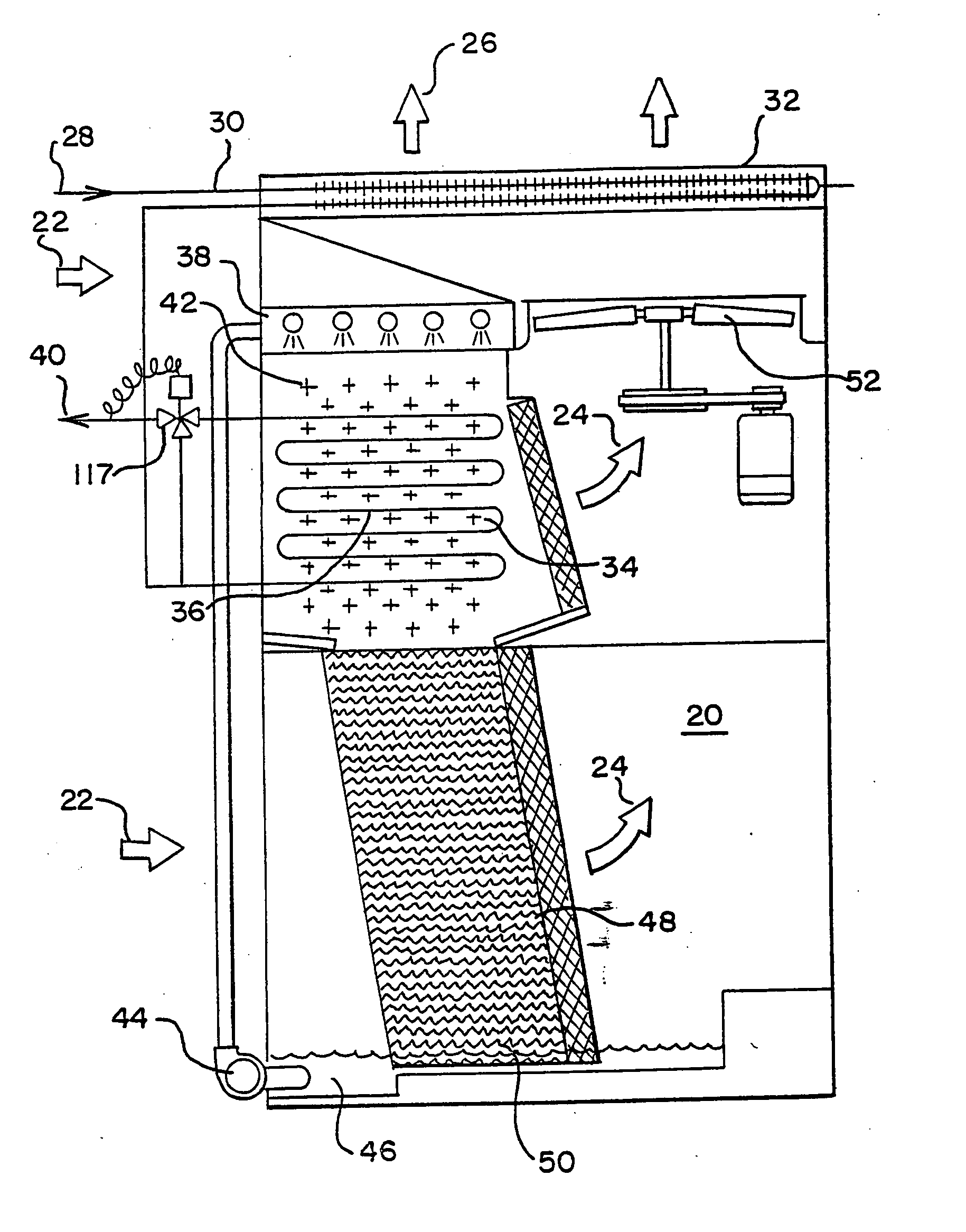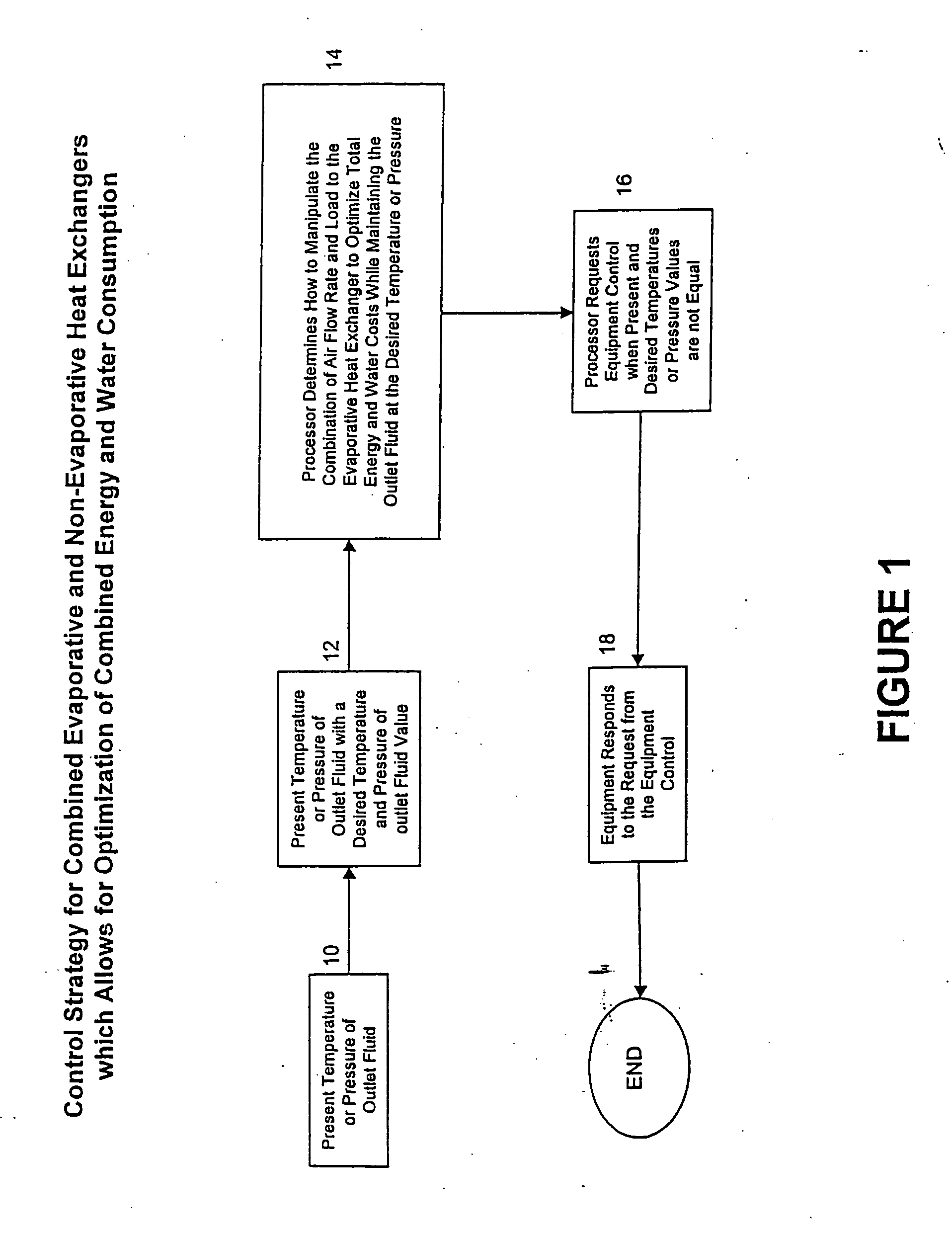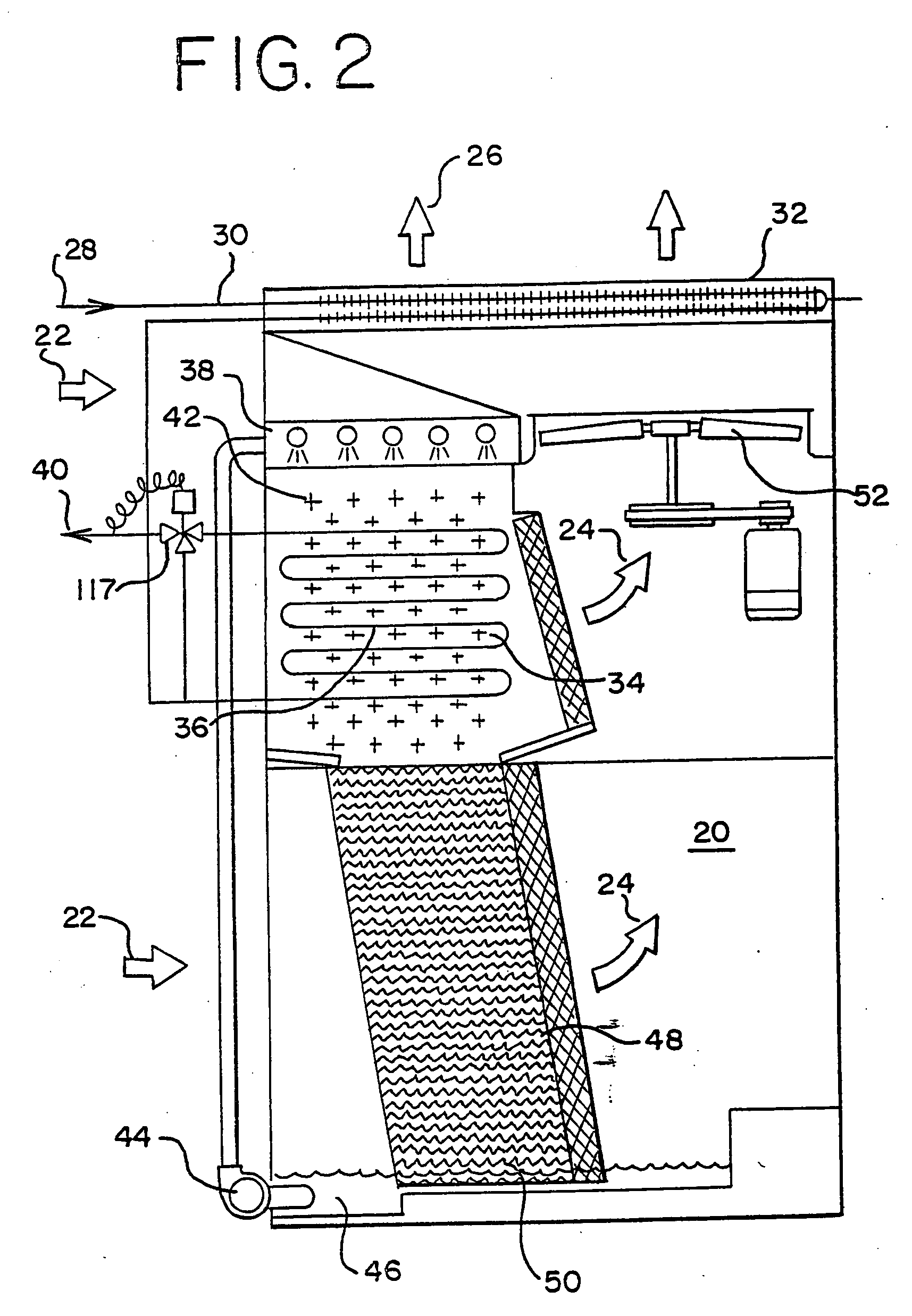Control of heat exchanger operation
a technology of heat exchanger and control mechanism, which is applied in the field of heat exchangers, can solve the problems that the control mechanism for such operation has not addressed both energy saving and water saving, and achieve the effect of minimizing energy use and water us
- Summary
- Abstract
- Description
- Claims
- Application Information
AI Technical Summary
Benefits of technology
Problems solved by technology
Method used
Image
Examples
Embodiment Construction
[0024] The following detailed description is of the best currently contemplated modes of carrying out the invention. The description is not to be taken in a limiting sense, but is made merely for the purpose of illustrating the general principles of the invention, since the scope of the invention is best defined by the appended claims.
[0025] Referring now to FIG. 1 of the drawings shown is a flow chart of one embodiment of the present invention providing a temperature or pressure of an outlet fluid 10. A processor compares the present temperature or pressure of the outlet fluid with a desired temperature or pressure of the outlet fluid 12. The processor then determines how to manipulate the combination of air flowrate and load to an evaporative heat exchanger to optimize total energy and water costs while maintaining the outlet fluid at the desired temperature or pressure 14. Next the processor sends a request to an equipment control when present and desired temperature or pressure...
PUM
 Login to View More
Login to View More Abstract
Description
Claims
Application Information
 Login to View More
Login to View More - R&D Engineer
- R&D Manager
- IP Professional
- Industry Leading Data Capabilities
- Powerful AI technology
- Patent DNA Extraction
Browse by: Latest US Patents, China's latest patents, Technical Efficacy Thesaurus, Application Domain, Technology Topic, Popular Technical Reports.
© 2024 PatSnap. All rights reserved.Legal|Privacy policy|Modern Slavery Act Transparency Statement|Sitemap|About US| Contact US: help@patsnap.com










